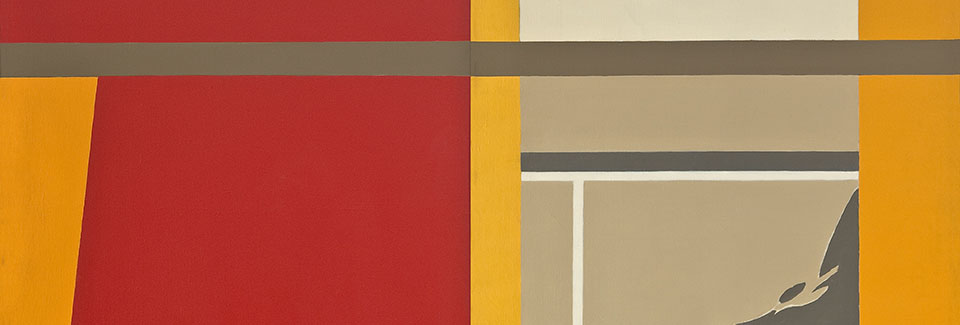On the occasion of the centenary of the birth
24 June – 14 September
Author: Zoran Erić, PhD
The exhibition dedicated to artist, pedagogue and academician Stojan Ćelić (1925-1922) opens at the SASA Gallery, marking the 100th anniversary of his birth and and honoring the family’s initiative to establish an endowment to preserve the artist’s legacy, which will be entrusted to the Serbian Academy of Sciences and Arts.
This exhibition highlights the spatial problem as the central motif and key category of Ćelić’s artwork. By blending tangible and exact features of space, such as the depth and perspective on the one hand, and psychological, reflexive and irrational dimensions on the other hand, the exhibition explores how Ćelić conceived the space in the mature phase of his career, from the early 1960s.
During this period, Ćelić developed his distinctive visual language characterised by reduction, abstraction and geometrisation, which became key elements of his approach to painting conception. The exhibition is organised in several thematic units dealing with various problems with evocative titles such as The Tectonics of the Urban, Vortex, Lattice and the Dance of Shapes. The goal is to showcase various manners of Ćelić’s sustained engagement in the spatial complexity, beginning with the ideas to present a painting as a panel and define the space through colour and form, to increasingly intricate compositional schemes employing linear, foreshortened, and multiple perspectives.
The exhibition features more than 40 paintings of various formats, seven graphic works and a tapestry, as well as documentary records testifying to Ćelić’s multifaceted engagement. Most of the artworks are on loan from the Zarić family, the donor of the Stojan Ćelić Endowment. Additional works have been provided by institutional collections, including the Museum of Contemporary Art in Belgrade, the Rajko Mamuzić Gift Collection in Novi Sad, the National Museum of Šumadija in Kragujevac, Zepter Museum, the Museum of the City of Belgrade, as well as several private collections. The exhibition is accompanied by a monographic publication featuring a study by Dr. Zoran Erić, who also curated the show.


